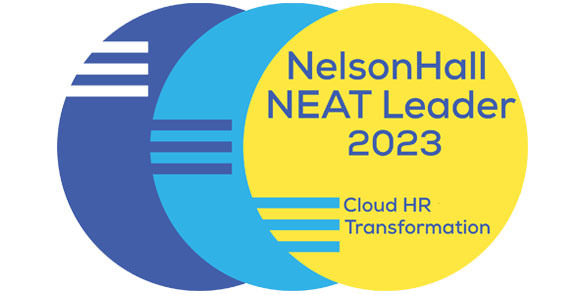Getting buy-in from internal stakeholders when assessing human capital management solutions is critical to ensuring a smooth transition. Doing so requires that you understand and align with key considerations in each functional area of your business. Be prepared to address stakeholder questions, concerns and objections and explain how a new HCM solution can help support their business goals, priorities and work.

When you involve the right decision-makers from your organization to choose which HCM solution to invest in, you can drive consensus by focusing on three key areas:
1. HR and business goals supported by HCM solutions
Will an HCM solution help us maintain a competitive advantage?
HCM solutions use automation to help streamline processes and reduce costs. They also provide insights on how to effectively manage both people and work. As a result, you may be able to address issues before they become problems, predict changes and give your teams what they need to be successful.
Can an HCM solution align with our values and business strategy?
Integrity, ethical business and data practices, and concern for people and the environment are top of mind with many leaders evaluating HCM systems today. The right solution should support those values and help you achieve your business and talent goals. If you’re a global company, you may want an HCM solution that works everywhere you do and can handle the compliance and practical differences.
Can an HCM solution help us solve an existing or anticipated problem?
Your HCM solution should not only help you solve existing problems, but also offer information and insights while streamlining processes. And because work and the ways we work are always evolving, an HCM solution ought to grow with you and help you adapt to changes.
Will an HCM solution align with how we work, learn and measure performance?
First, you must understand the communication and management approaches that the HCM solution uses and how it defines engagement and measures performance. Then, decide if these methods will work for your organization, both now and in the future.
Will investing in an HCM solution affect productivity and our ability to meet goals and how fast can we complete the transition?
When evaluating the return on investment of an HCM solution, weigh the initial adjustment period against the longer-term savings. More efficient processes, new capabilities and people focused on providing great products or services to your customers are all key advantages to consider. To achieve this success, however, you must make sure the acquisition process has enough time and resources.
Will an HCM solution offer new reporting and insights and will it impact our metrics, processes and access to data?
With a new HCM solution, you will probably be tracking, measuring and accessing new data and reports. To mitigate this impact on your existing analytics and processes:
- Determine what the new data will tell you and how you can use it
- Understand how and whether your current metrics will transition to the new solution
- Review the pros and cons of any changes in KPIs with stakeholders
- Show end-users how to access the new data
Can an HCM solution reduce administrative burden and improve work processes for individuals and teams?
Most software takes repetitive tasks and automates them so people can focus on more substantive work. When evaluating HCM solutions, it’s important to assess where you will be achieving time and costs savings and where you will be gaining insights that may require more learning. Be prepared to offer specific training that meets various user needs.
2. Data and security needs of HCM solutions
Will an HCM solution work with our existing systems and programs?
Your existing programs may work with one HCM provider, but not others. Consult your IT professionals from the beginning and look for providers with multi-function solutions or platforms that can be customized to what you need. Having data that flows across functions and programs that play well together can make everyone's life easier.
Will our data and information be secure and compliant with privacy laws?
Because new laws on data security, storage and deletion are going into effect yearly, you should make sure that your HCM provider can stay up to date with the latest privacy requirements in the United States and globally.
What resources are needed for HCM implementation, training and adoption?
IT professionals can often provide guidance on the resources necessary to learn the new HCM solution and teach others. Keep them involved throughout the decision making, implementation and training processes so they can help your organization get up and running as quickly and smoothly as possible.
Is purchasing an HCM solution better than trying to improve our own internal processes or create our own solution?
Although you may have the capabilities to build your own HCM system or improve existing processes, it would be difficult to match the experience and expertise of a top solution. In many cases, DIY is also more time consuming and expensive.
3. Budget procurement and compliance considerations for HCM solutions
Will an HCM solution meet our budget and practical needs?
Use a vendor grid to compare the cost and functionality of different HCM solutions and how they fit your needs. Also, because your business and technology are likely to change, evaluate which solutions can grow with you over time or which will need to be replaced.
Can an HCM solution give us the best value for our budget and investment?
Work with your procurement team to evaluate your HCM purchase and understand how it will fit with other investments. Your provider can often help you understand the value proposition and provide all the information that procurement needs for a smooth approval process.
Does this HCM provider meet our requirements and is it compatible with existing licenses, contracts and other planned purchases?
Seek the advice of your procurement and legal teams to determine if your HCM purchase overlaps or conflicts with other solutions. Choosing a provider who is comfortable and willing to work with procurement also helps.
Can an HCM solution help keep us compliant with employment laws everywhere we have workers?
An HCM solution can help you stay up to date with changing employment laws whether you have just one place of business or operate globally. Make sure your provider covers the locations for everyone who works for your organization, including independent contractors.
Download the HCM Stakeholder Priorities guide or learn how to create an HCM business case template.
Go deeper
- Article HCM Buyer's Guide


